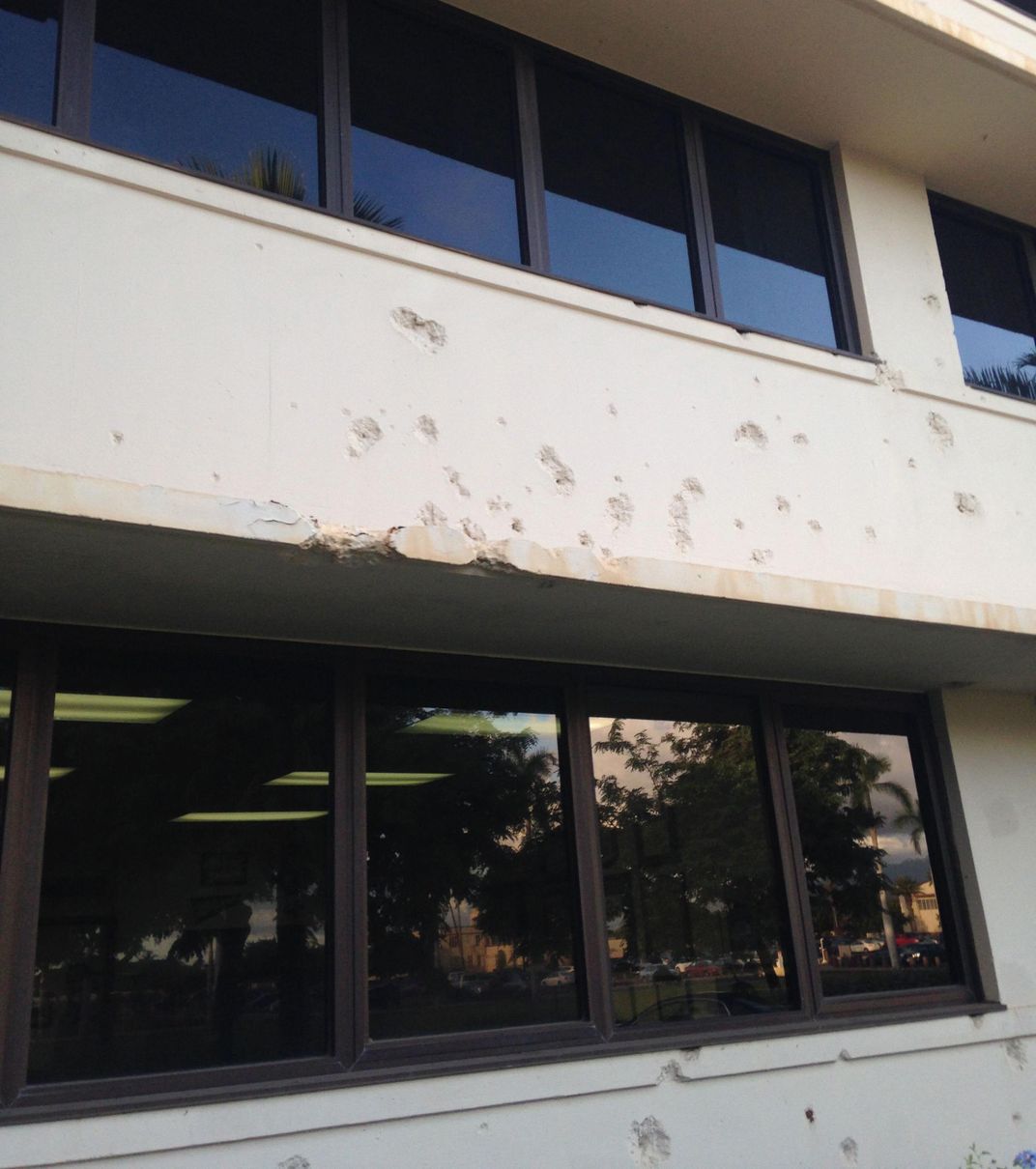Among the Ghosts at Pearl Harbor, 70 Years After V-J Day
A visit to where America’s World War II began, and ended.
/https://tf-cmsv2-smithsonianmag-media.s3.amazonaws.com/filer/e1/7c/e17cc745-aea7-444d-9463-ffe07ec017c6/surrender_of_japan_-_uss_missouri.jpg)
As our Honolulu-bound American Airlines 767 taxied to the runway at Dallas-Fort Worth, the senior flight attendant made an announcement: A Pearl Harbor survivor was on board, headed back to the island for the first time since the war. There was polite clapping at first, then it grew; soon the cabin of the airplane was filled with applause.
About eight hours into our journey, as we were about to begin our descent toward an emerald-green chain of islands in an impossibly blue Pacific Ocean, I asked the senior flight attendant to direct me to the man. I approached a slim veteran who sized me up with clear eyes. This fellow airman, who told me he flew air sea rescue aircraft from Pearl, and later B-29s from tiny footholds of coral won by U.S. Marines, was 90, but appeared to be barely out of his sixties. I was in uniform, headed for temporary duty at Hickam Air Force Base, and flustered. I shook his hand, thanked him for his service (my words rang hollow in my head—who was I to even say that?), and returned to my seat as the island of Oahu appeared outside the window.
The next morning, I reported to Pacific Air Forces (PACAF) headquarters, housed in a rambling two-story building, with several wings that jut off from its center. Inside, computers hum, meetings drone on, and printers jam.
The edifice is unremarkable except for its bullet-scarred exterior. On the morning of December 7, 1941, PACAF’s HQ was a barracks, filled with sleepy soldiers who dozed or contemplated a well-earned day off. Scores of them, as they lay in their bunks, didn’t know their lives would end in minutes as Japanese aircraft lined up to strafe and bomb Pearl Harbor. Their barracks was a prime target, and its exterior bears silent witness.

I walked the halls of PACAF with Chief Master Sergeant Josephine Yenke, who led me to the interior courtyard. The concrete here is also pock-marked with tennis ball-sized craters, each the impact point of a Japanese bullet, possibly fired by a Mitsubishi A6M “Zero,” at the same time that Aichi D3A “Vals” and Nakajima B5N2 “Kates” were decimating Battleship Row in the harbor. As the Chief and I climbed a metal staircase, an inch-wide bullet hole appeared, punched about halfway up. Each hall of the building—now a warren of offices and cubicles partitioned by dreary fabric-covered panels familiar to anyone who’s ever been in a DMV—was once an open bay studded with hundreds of bunks. At the base of a stairwell, a large photo stood on an easel next to a concrete pillar, which now formed the corner of two walls concealing office space within. In the photo, and next to the same pillar, were three baby-faced GIs, silver dog tags laying against their white T-shirts as they mugged for the camera.
I wondered: Did they survive?
There are stories. Working late, you may hear doors slam, voices call out, or other mischief. Some believe the building is inhabited by the spirits of the men who died here.
After a few days at PACAF, I went to a meeting at U.S. Pacific Command headquarters, which overlooks Pearl from a 600-foot bluff. Afterwards, Chief Yenke took me to Ford Island, where we toured the USS Missouri, on whose deck the articles of surrender that ended World War II were signed 70 years ago today, on September 2, 1945. As we milled about with the other visitors, a docent waved and pointed to a hatch; we entered and he shut it behind us. The three of us were below decks, and now inside one of the “Mighty Mo’s” massive forward turrets. As he explained the loading process for the enormous 18-inch shells, the Chief and I got to take turns pulling the trigger that would have fired one of the guns. Not a bad way to spend an hour or so away from the office.
Ford Island is also home to the Pacific Aviation Museum, housed in the same hangars that stood on the morning of the attack. Curtiss P-40Bs from Ford scrambled from here, with some of their pilots dressed in pajamas, tuxedo pants, or whatever clothes they could grab. The museum also features a very rare B-17E, known to Flying Fortress geeks as the first model with the classic sweeping tail, and which lacks the later frame-less nose of the -F and -G variants. The Pacific Aviation Museum’s B-17 sat in New Guinea’s Agaiambo Swamp from 1942 to 2006 after its pilot ditched it on a mission to Rabaul. Today the aircraft is being restored in hangar 79, and you can donate to help fund its rebirth.
I hated to leave Hawaii. As we lifted off, I reflected about the Missouri. From its deck, you can take in the entirety of that Sunday morning—to your left, the USS Arizona Memorial, and then, the USS Utah, its wreckage still visible above the waves.
We tend to think of Pearl Harbor only for its historical importance, but today, about 360,000 service men and women are stationed here and throughout the Pacific, and PACOM is pivotal to our stated strategic shift east toward Asia.
The history is uniquely moving. And yet, 70 years after the war ended, soldiers, sailors, airmen and Marines are still on watch.
/https://tf-cmsv2-smithsonianmag-media.s3.amazonaws.com/accounts/headshot/Sotham_photo.jpg)
/https://tf-cmsv2-smithsonianmag-media.s3.amazonaws.com/accounts/headshot/Sotham_photo.jpg)